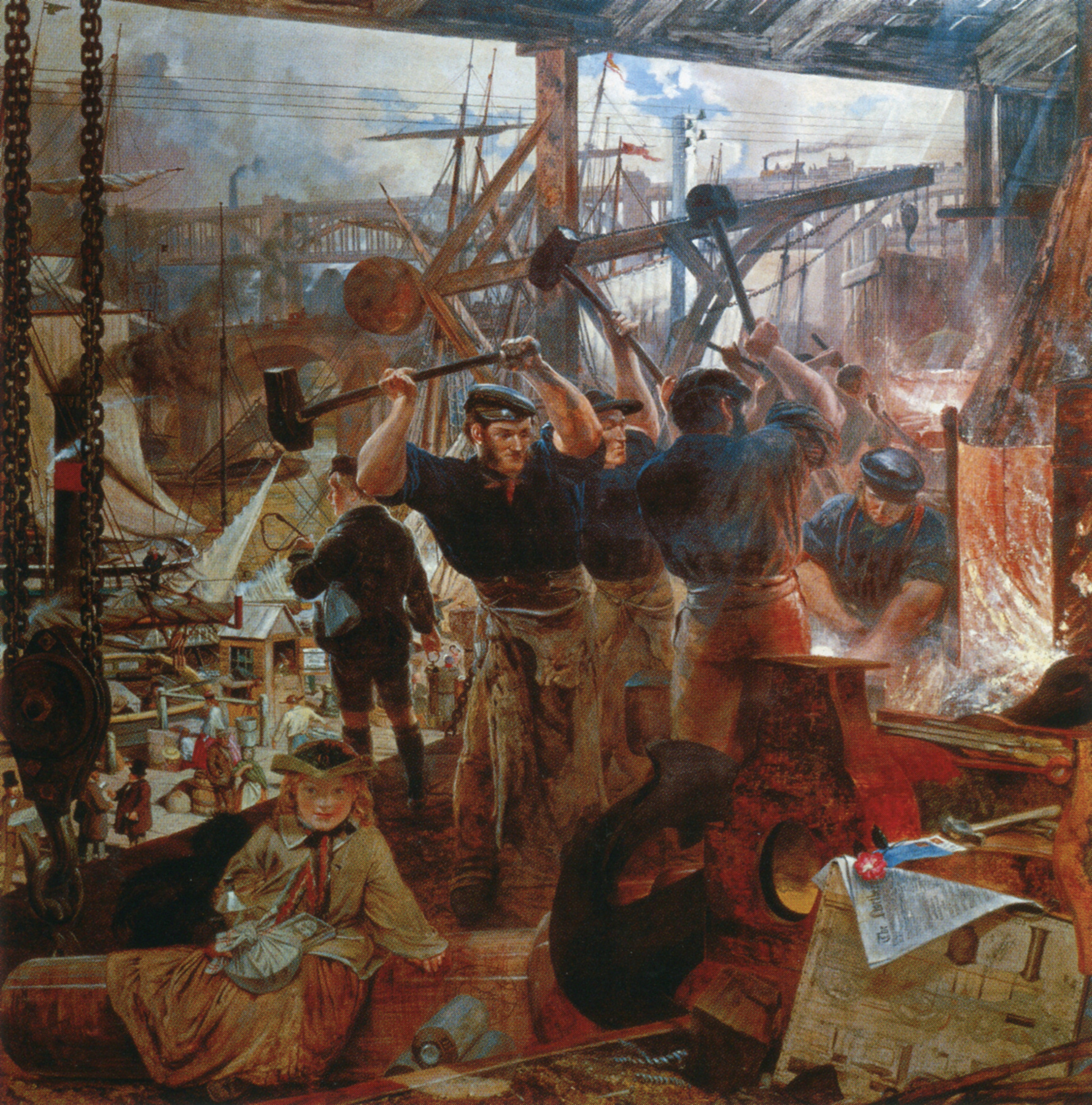Practice Quiz
10 questions
Give feedback
1. Which area of the world saw the steepest decline in its share of global manufacturing in the 1800s?
2. Prior to the Industrial Revolution, where did the average person get their textile goods?
3. Henry Ford was a hugely influential industrialist and engineer. What method did he pioneer inside of his factories that changed the production game forever?
4. From a worker's point of view, the factory system led to ___.
5. You have all of these laborers in their own separate cottages working at their own rate. Lame. We need something more modern… How can you specialize this labor into a single location?
6. During the first industrial revolution, money for investment in British industries often came from:
7. All of the following were reasons that the Industrial Revolution began in Britain EXCEPT
8. There wasn't just one Industrial Revolution- there were several. Which Industrial Revolution was most associated with Steam Power and Textile Production?
9. From a consumer's point of view, the factory system led to ___.
10. Which of the following did not assist in the first country becoming industrialized?
J
Jillian Holbrook
J
Jillian Holbrook
AP World History: Modern 🌍
577 resourcesSee Units
AP World History: Modern 🌍
577 resourcesSee Units
Causes of the Industrial Revolution
As industrialization began, human populations grew and changed with activities that radically altered the environment. The Industrial Revolution, from 1750-1900, took place primarily in Britain, but also in other countries such as the United States, Germany, and France. During this time, there were significant advances in technology, transportation, and manufacturing, which led to critical changes in the way goods were produced and consumed.
One of the key factors that contributed to the Industrial Revolution was the development of new sources of energy, particularly coal and steam power. The steam engine, which was invented in the late 18th century, made it possible to power factories and machines, which led to an increase in production and a decrease in the cost of goods.
The Industrial Revolution also saw the development of new technologies, such as the cotton gin and the power loom, which made it possible to produce textiles more efficiently. This led to the growth of the textile industry, which became one of the most important industries during this time. 🪡
If it were not for the necessary elements from the environment, the Industrial Revolution would have been unsuccessful. A variety of factors contributed to the growth of industrial production:
- proximity to waterways, including rivers and canals
- the geographic distribution of natural resources, such as coal, iron, and timber
- urbanization, which changed the working and living conditions of populations
- the legal protection of private property
- improved agricultural activity
- access to foreign resources
- capitalism
Agricultural productivity increased in the 1700s with new techniques, such as crop rotation (to not overuse the nutrients in the soil), the seed drill, and using the potato as a major source of caloric nutrition. Coal, iron, and timber provided nations with critical natural resources to utilize for the creation and sustainability of factories. Close proximity to waterways, rivers, and canals provided factories with sources of power, transportation, and places to discharge waste.

"Iron and Coal" by William Bell Scott, 1855-1860. Image courtesy of Wikimedia
In addition to the environment, other factors for the start of the Industrial Revolution included urbanization, legal protection of private property, and wealth from colonies. As factories emerged, people moved into cities in droves, and this process intensified as more were built factories, leading to even more people moving to cities. Governments created laws to protect property, an Enlightenment natural right, which enabled wealthy individuals to make major investments in factories. Lastly, nations that industrialized benefited from their colonies by extracting wealth and resources from them, resulting in the accumulation of capital and resources. 💰
In Great Britain specifically, the Enclosure Act restricted land ownership in rural areas. Britain also had several colonies. Beyond access to additional areas to extract natural resources, colonies gave this European power new markets to sell goods. In combination with Britain's abundance of coal to power factories, this country led industrialization,
The Factory System
A broad tagline for the Industrial Revolution would be the transition in human society from farms to factories. Before the Industrial Revolution, people often grew their own food, lived outside the city, and interacted with each between families throughout the day. With the rise of factories and the factory system, the Industrial Revolution radically changed human society and structure.
The factory system involved having labor and production take place in a single location. People had to move to factories, which were mostly built in urban areas and close to rivers. This created a concentrated amount of people in a specific area through increased urbanization, centralizing the factory workforce.
As part of a desire for efficiency, workers concentrated on one specific skill or task in the factory. This specialization of labor, under the idea of the assembly line, saw workers focus on one area in order to maximize production. Workers no longer had the skill to create a finished good as they did as guild craftsmen, enforcing greater reliance on the factory system for production.
In a factory system, the production of goods ultimately became more organized around a central factory or workshop, where raw materials were brought in, and finished goods were produced and then shipped out to customers. Overall, the Industrial Revolution and its subsequent factory systems had a significant impact on the economy and society of the countries that experienced it. It led to the growth of cities and the rise of a new middle class, changing the way people lived and worked.
🎥Watch: WHAP - Industrialization in World History

© 2025 Fiveable Inc. All rights reserved.